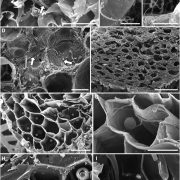
Insights into a Vascular Plant–Fungal Symbiosis
Plant Physiology, Plant Physiology: On The InsideThe land invasion by plants more than 500 million years ago was facilitated by the formation of mutualistic symbioses with fungi, through which the earliest plants gained access to mineral nutrients in exchange for photosynthetically fixed carbon (C). It was long hypothesized that this ancient mycorrhiza-like…
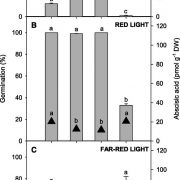
Smoke and Lettuce Seed Germination
Plant Physiology, Plant Physiology: On The InsideWildfire smoke contains certain potent bioactive compounds (butenolides) that play a major role in regulating the germination of many plant species, predominantly grasses and shrub species from fire-prone ecosystems but also many non-fire-dependent plants such as rice (Oryza sativa), wild oats (Avena…
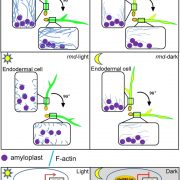
Actin Binding Protein and Negative Gravitropism
Plant Physiology, Plant Physiology: On The InsideGravity is a key determinant in orienting plant stems for proper growth and development. An intact and dynamic actin cytoskeleton is thought to be important for plants to respond to gravity; however, pharmaceutical treatment and mutant analyses have yielded conflicting results. In Arabidopsis (Arabdopsis…
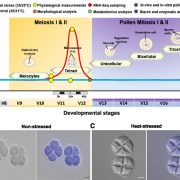
Heat Stress: Two New Insights
Plant Physiology, Plant Physiology: On The InsideHigh temperatures caused by climate change are predicted to decrease cereal productivity in many parts of the world. Yield losses due to rising temperatures have already been reported for major cereal crops including maize (Zea mays), wheat (Triticum sp.), and rice (Oryza sativa). These cereals together…
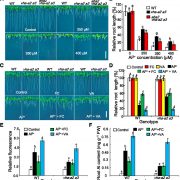
Vacuolar H+-ATPase Regulates Al Resistance
Plant Physiology, Plant Physiology: On The InsideIn acidic soils, phytotoxic levels of active aluminum (Al) are released from Al-containing minerals when the pH drops to 5 or lower. These active Al forms, primarily Al3+, often threaten root vitality and inhibit primary root elongation, thus limiting the acquisition of nutrient elements and water necessary…
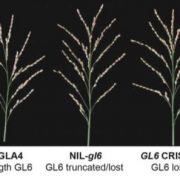
A rice transcription factor controls grain length through cell number
Plant Physiology, Plant Physiology: News and Views, ResearchProviding around 20% of global calories, rice (Oryza sativa) is one of the most important staple crops (Global Rice Science Partnership (GRiSP), 2013). With consumption particularly increasing in sub-Saharan Africa, the Middle East and Latin America, it is vital to increase rice yields to supply the…

Recognizing Plant Physiology first authors: Jacob O. Brunkard
Plant Physiology, Plant Physiology: Author ProfilesJacob O. Brunkard, first author of Plant cell-cell transport via plasmodesmata is regulated by light and the circadian clock
Current Position: Principal Investigator, Department of Plant and Microbial Biology, UC Berkeley and Plant Gene Expression Center, USDA Agricultural Research Service
Education:…

Recognizing Plant Physiology first authors: Damián Balfagón Sanmartín
Plant Physiology, Plant Physiology: Author ProfilesDamián Balfagón Sanmartín, first author of Jasmonic acid is required for plant acclimation to a combination of high light and heat stress
Current Position: PhD student at University Jaume I of Castellón, Spain
Education: BSc in Agriculture Engineering and MSc Agriculture Biotechnology at University…

UMP pyrophosphorylase-a moonlighting protein with essential functions in chloroplast development and photosynthesis establishment
Plant Physiology, Plant Physiology: News and Views, ResearchPyrimidine nucleotides (e.g., dCTP, dTTP, UTP, and CTP) are essential building blocks for DNA and RNA synthesis in all organisms. In plants, sucrose and cell wall polymer synthesis depend on pyrimidine nucleotide-derived substrates, such as UDP-glucose, and important classes of membrane lipids are made…

